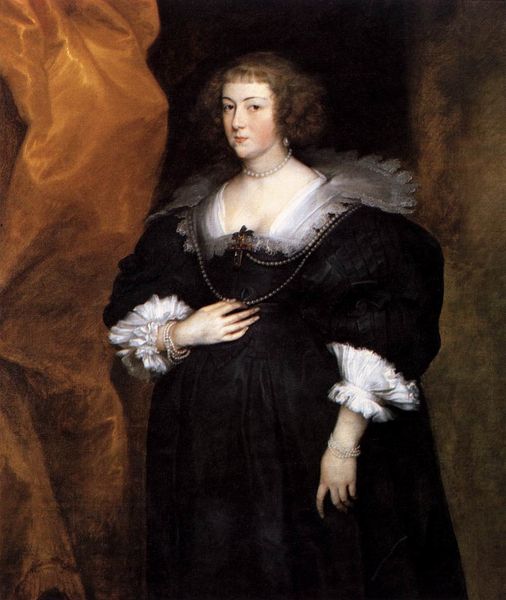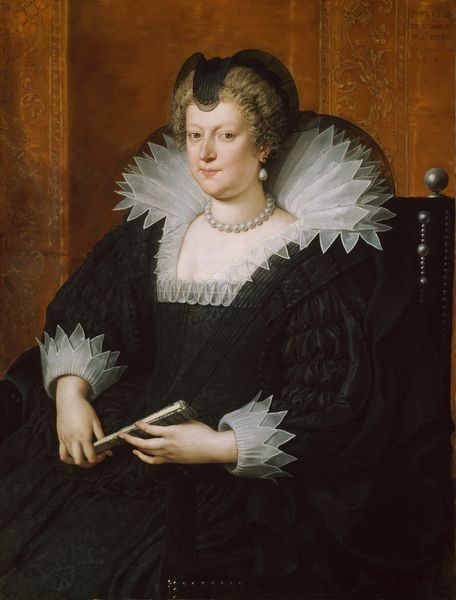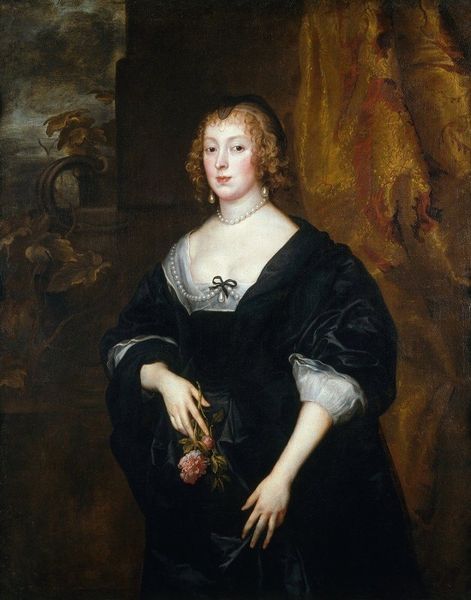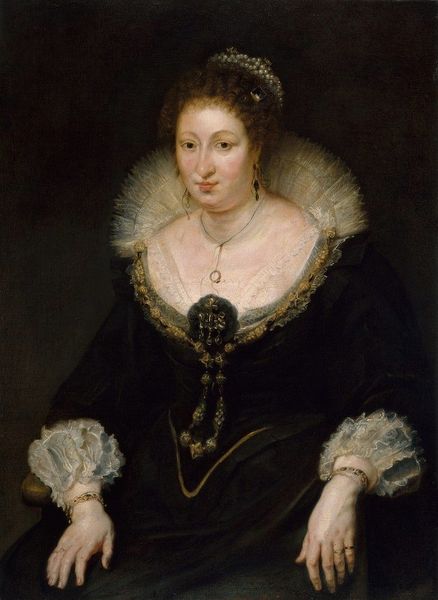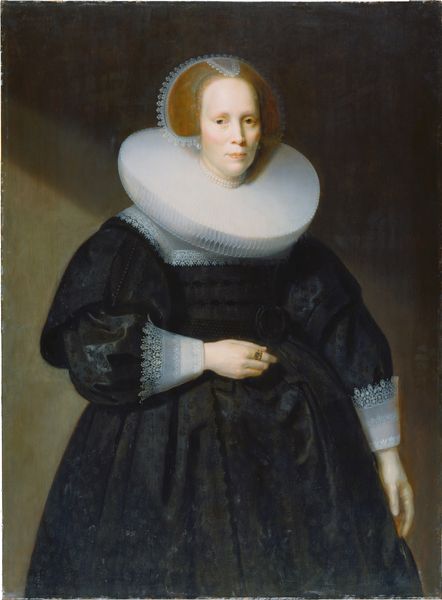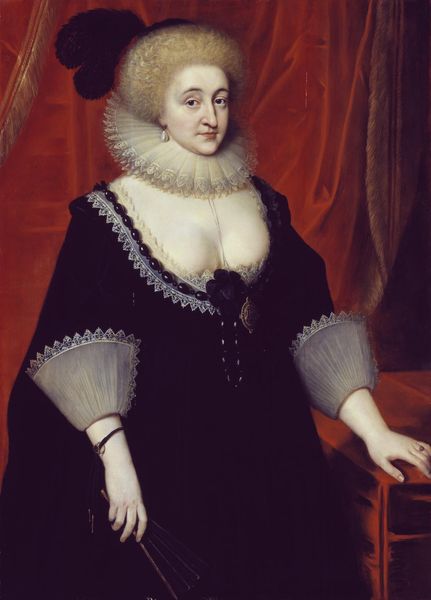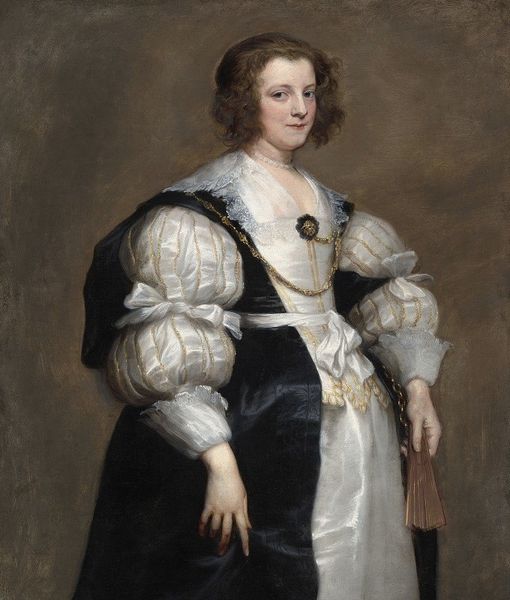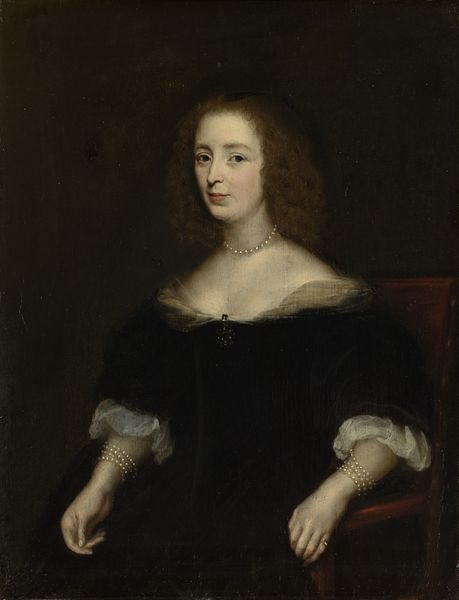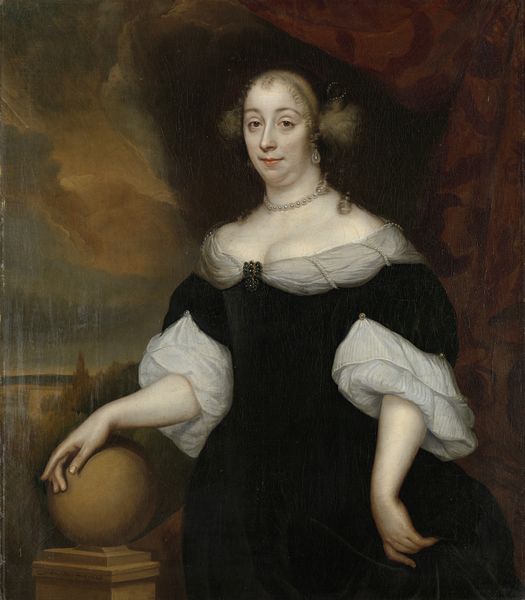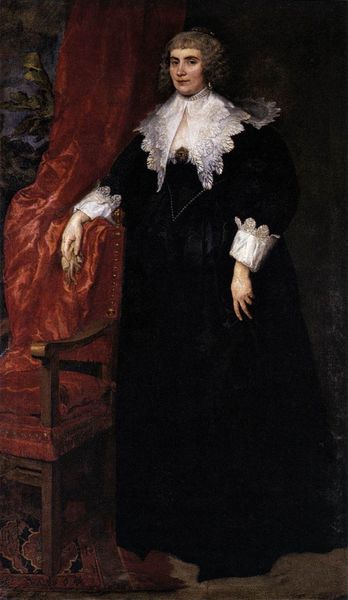
painting, oil-paint
#
portrait
#
baroque
#
painting
#
oil-paint
#
history-painting
#
academic-art
Dimensions: 130 x 108 cm
Copyright: Public domain
Curator: Let's consider Peter Paul Rubens’ oil on canvas portrait of "Marie de Medici", completed around 1622, currently held at the Museo del Prado. Editor: My immediate impression is of power and perhaps a touch of melancholy. The figure's dark garments contrast sharply with the delicate lace, but overall, it’s quite muted and imposing, isn’t it? Curator: It’s essential to see this work not as an isolated portrait but as a component reflecting social strata and the manufacturing that served it. Look at that lace collar—the hours of skilled labor involved, the specialized production... all indicators of wealth and status meticulously captured. The raw materials like oil, canvas, and pigments contribute too to this historical narrative about baroque splendor and the societal machine that creates and portrays it. Editor: Yes, but those signifiers point to so much more. Black, historically associated with mourning or sobriety, becomes a symbol of regal power and reserved authority here, contrasted against the delicate purity conveyed by that massive white lace collar. Pearls have long signaled purity and are, in some traditions, linked to tears; their display signals a life both lavish and marked by the hardship that accompanied power during this time. Curator: Interesting how those sartorial choices become cultural statements, influencing their material execution, in turn reflecting and reinforcing societal structures. Each item becomes data to quantify wealth and artistic investment. The painting itself becomes both a consumer item and propaganda. Editor: Precisely, the materiality speaks, but through symbols that communicate something deeper than economic realities. Rubens invites viewers to decode Marie's persona through these curated, almost theatrical visual cues, steeped in centuries of pre-existing symbolic language. Her very pose and gaze exude composure and authority, drawing on iconographic conventions to present a narrative beyond mere physical likeness. Curator: Viewing this piece from the angle of resources and execution tells only part of the story of art-making as a political tool and luxurious expenditure of effort. Editor: Seeing how the painter harnessed familiar imagery unlocks how it projects controlled power, making its emotional complexity timeless, I would argue, because visual shorthands rarely disappear entirely. Curator: An alternative view helps flesh out how class relations impacted the visual landscape. Fascinating interplay! Editor: Indeed, illuminating art requires an understanding of not just its components, but how those echo through the annals of collective visual literacy.
Comments
No comments
Be the first to comment and join the conversation on the ultimate creative platform.
